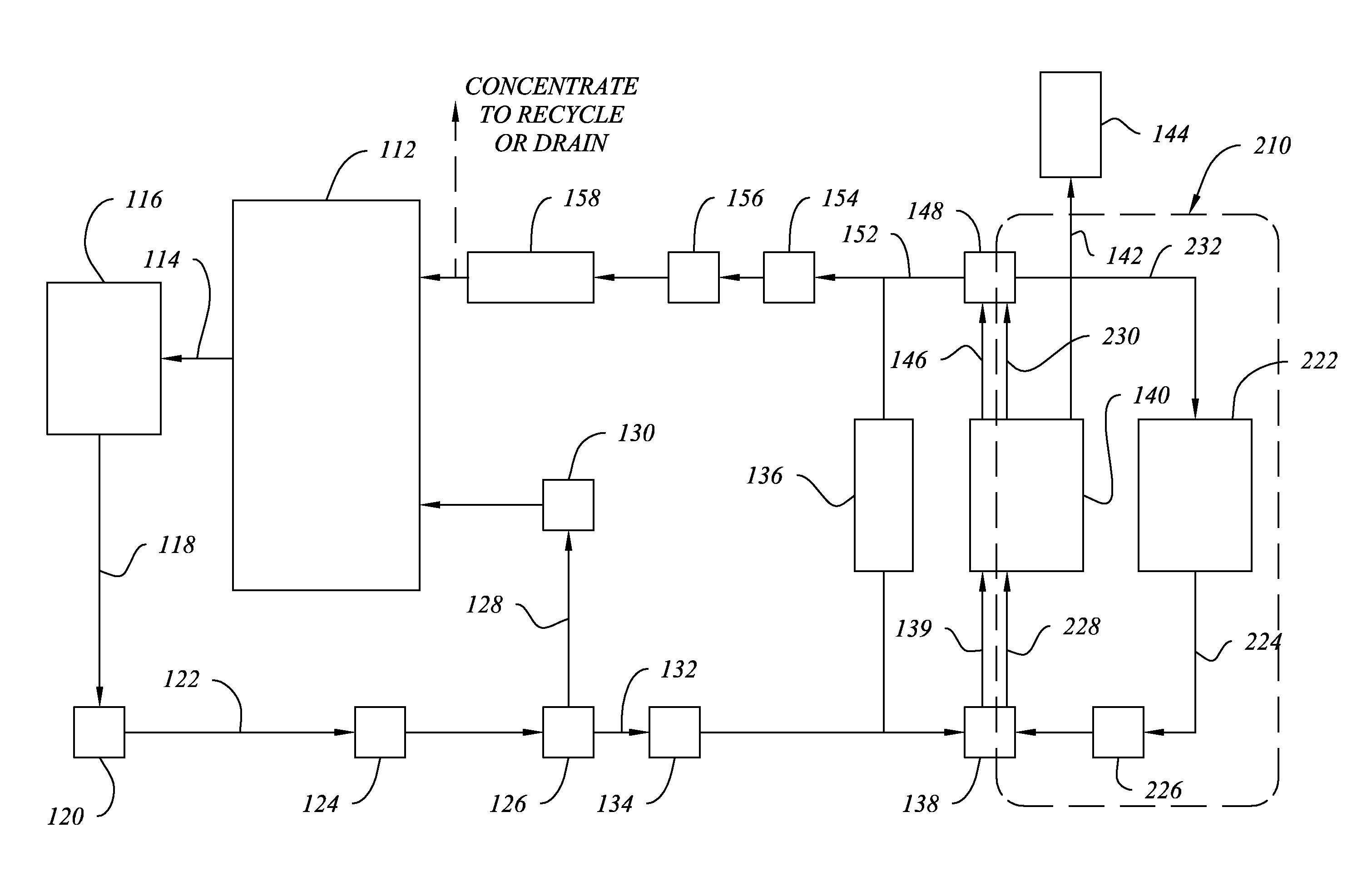Composition, System, and Method for Treating Water Systems
a technology of water treatment and composition, applied in the direction of cleaning using liquids, application, nature of treatment water, etc., can solve the problems of reducing the efficiency of water treatment, reducing the cost of sewage treatment, and consuming around 700 billion gallons of water annually, so as to reduce the cost and risk, and reduce the effect of biofilm and scal
- Summary
- Abstract
- Description
- Claims
- Application Information
AI Technical Summary
Benefits of technology
Problems solved by technology
Method used
Image
Examples
example 1
Treatment of Biofilm Contaminated Coupons in the Laboratory Setting
[0077]Biofilm coupons containing multiple bacterial species were produced using a semi-batch bioreactor system in a laboratory setting. The biofilm reactor was designed around a continuous stir tank reactor and was fabricated using a 5 liter PVC container and contained 4 coupon holders and a central drive paddle that was used to induce a controlled fluid flow around the suspended coupons. The drive paddle was made from a Perspex paddle (10 cm×5 cm) that was attached to a 19 cm PVC rod and screwed into the drive of a gear DC motor with a gear ratio of 1:10 (Tanner Electronics). The coupon holders were also fabricated from PVC rods (14 cm) that were fixed in place through the lid if the biofilm reactor. The coupon rods were tapered at the bottom to enable easy fastening of both glass slides and metal coupons. Prior to operation, the reaction chamber and the individual components were disassembled, soaked in a 5% bleach...
example 1a
[0083]Example 1 was repeated again but in this case a commercially available secondary biocide, MB-2128, was added to aid the initial treatments. In this case it was observed that after processing the biofilm and supernatant at the lowest concentration treatment there was a 2 log reduction in the microorganism counts. For the minimum and maximum concentration levels there were no detectable microorganisms recovered from the biofilm or from the supernatant. The results are summarized in Table 2.
TABLE 2Recoverable microorganisms at different treatmentcomposition concentrations with a secondary biocideCFU / ml Recovered fromSlideBiofilmControl (initial reading)1.0 × 106Control (after 24 hours)1.3 × 107Lowest Concentration (initial reading)8.5 × 104Lowest Concentration (after 24 hours of9.8 × 105treatment)Minimum Concentration (initial reading)Below detection limitMinimum Concentration (after 24 hours ofBelow detection limittreatment)Maximum Concentration (initial reading)Below detection ...
example 1b
[0084]The process of Example 1 was repeated with the use of a commercial dispersant on the MB-2128 present in the same concentrations as Example 1A, but without the treatment composition of the present invention. When the treated solution and biofilm were processed it was found that there was only a 3 log reduction in the biofilm and supernatant were achieved.
[0085]The results of Examples 1, 1A, and 1B show that using the maximum strength concentration of the reagents was highly effective at removing biofilm and eliminating microorganisms in the solution and in the biofilm. The minimum concentration showed some efficacy at removing biofilm and reducing microorganisms when used alone; however; when the treatment composition was used with a secondary biocide there was a marked improvement in performance with no viable bacteria being recovered in the sessile or planktonic states. In addition the performance of the minimum concentration solution when used with the secondary biocide out-...
PUM
 Login to View More
Login to View More Abstract
Description
Claims
Application Information
 Login to View More
Login to View More - R&D
- Intellectual Property
- Life Sciences
- Materials
- Tech Scout
- Unparalleled Data Quality
- Higher Quality Content
- 60% Fewer Hallucinations
Browse by: Latest US Patents, China's latest patents, Technical Efficacy Thesaurus, Application Domain, Technology Topic, Popular Technical Reports.
© 2025 PatSnap. All rights reserved.Legal|Privacy policy|Modern Slavery Act Transparency Statement|Sitemap|About US| Contact US: help@patsnap.com



